Writing Teaching Resources
Teaching writing strategies and the writing process this school year? Explore a comprehensive collection of teacher resources for primary English teachers — all created by teachers!
Stocked with graphic organisers, writing prompts, templates, worksheets and so much more, this collection of printable and digital activities is designed to help you as you help your students become more effective communicators and unleash their creativity and imagination.
Save time on lesson planning with resources that are aligned with the Australian curriculum (including version 9!) and have been through a careful review process by an expert member of our teacher team to ensure they're ready for your classroom and your students!
Are you looking for tips and tricks to add to your teacher toolkit this school year? Read on for a primer from our teacher team, including engaging activities for teaching writing inprimary school and a look at some of the different writing strategies your students will need to learn.
11 Writing Strategies Kids Should Know by the End of Primary School
We can't talk about teaching kids to write without talking about the different writing strategies that can help them do just that!
When it comes to teaching our students to become confident writers who articulate their ideas effectively, here are some of the strategies our teacher team prioritises:
1. Brainstorming
Brainstorming is something we often do in the classroom, and it's a crucial part of learning to generate the ideas that will drive students' writing as they progress through their educational journey. Kids should know how to create a list of potential topics or points related to a particular writing assignment.
With younger students, this is often done as a whole group by writing ideas and points on chart paper. In upper years, students transition over to using text-based materials to generate ideas and talking points.
2. Outlining
Before diving directly into any assignment, our students should be able to create a structured framework or outline. Teaching students how to create this outline will help them organise their thoughts and arguments for penning their essays, reports and research papers.

3. Using Graphic Organisers
Technically graphic organisers are classroom tools, so you may not think of their use as a writing strategy per se. However, learning to use these tools is another means of providing kids with the tools they need to organize their ideas and information before they sit down to write.
These organisers are particularly useful for expository writing — students can use them to outline main ideas, supporting details, and transitions.
Students can also take advantage of story maps when they are working on narrative writing to plot the key elements of a story, such as characters, setting, conflict, rising action, climax and resolution.
Graphic organisers such as the OREO strategy and hamburger paragraph are also great tools for students to use when working with opinion and persuasive texts.
4. Freewriting
Writer's block is the enemy of creativity, and it can easily frustrate young students who don't know where to begin.
When students freewrite, they write continuously without worrying about grammar or punctuation. This writing strategy can be extremely freeing — hence the name! — and helps frustrated writers move past that writer's block, generating fresh ideas.

5. Peer Editing
Learning to review and provide constructive feedback on each other's work is a great writing strategy to employ in your classroom to help students improve their writing quality and enhance their editing skills.
The strategy allows your students to learn from one another, and it arms them with an important tool they can use well into the future — calling on peers to provide a critical eye to a piece of writing.
6. Using Sensory Language
Working on descriptive writing? With this writing strategy, students engage the reader's senses through vivid and sensory language to create a more immersive experience.
7. Including Transitions and Connectives
As students become more proficient in the writing process, learning to use transitional words and phrases allows them to create smooth transitions between sentences and paragraphs. This strategy makes their writing more coherent and polished.
8. Incorporating Evidence
In persuasive, opinion and expository writing, students are taught to support their claims with evidence and examples to strengthen their arguments.
It takes some practice to train your students to use evidence in their writing, so it's often a good idea to start with something simple, like the R.A.C.E.S. strategy.
9. Crafting a Thesis Statement
In expository, opinion and persuasive writing, crafting clear and concise thesis statements that summarise the main point or argument of their essay helps students be more focused and organised in their writing.
This strategy can also have the effect of empowering students to express their ideas confidently and persuasively.
10. Incorporating Introductions and Conclusions
With this strategy, students practice crafting effective introductions and conclusions that grab the reader's attention and leave a lasting impression.
11. Following a Revision Checklist
Teaching your students to use a revision checklist is a strategy that will help them be more self-reflective, evaluating their own writing against the checklist criteria and becoming more aware of their strengths and weaknesses.

- Plus Plan
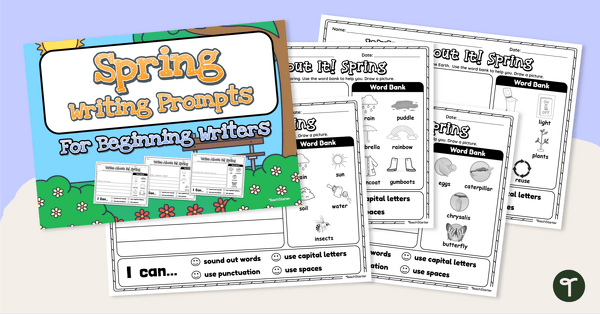
Spring Writing Prompts for Beginning Writers
Use the season of spring to inspire writing in your early years classroom.
- Plus Plan
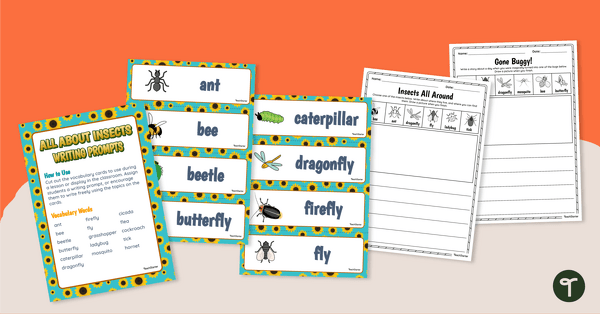
Insect-Themed Flashcards and Writing Prompts
Inspire young entomologists to read and write about insects with minibeast writing prompts and word wall cards.
- Plus Plan
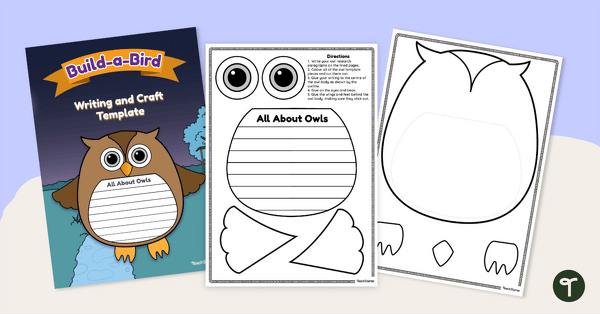
Build-a-Bird - Owl Report Writing Template
Research, write and create an owl report with a cut-and-assemble owl shaped writing template.
- Plus Plan
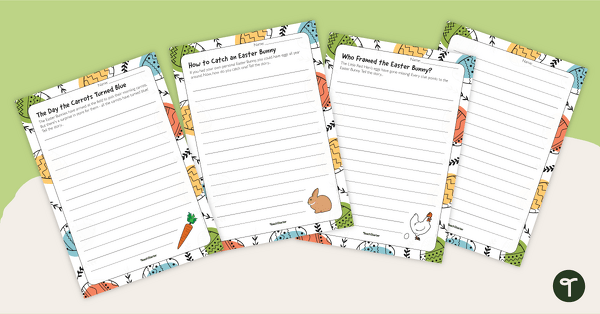
Easter Writing Prompts Worksheet
Explore imaginative writing in your classroom with these 3 fun story writing prompts for Easter.
- Plus Plan
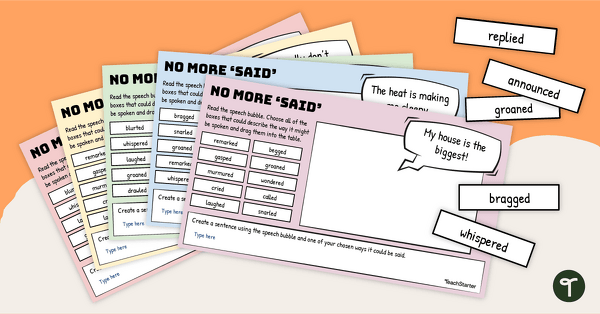
No More 'Said' – Google Interactive Activity
Interpret dialogue by determining which style of speaking best describes the written phrase.
- Free Plan
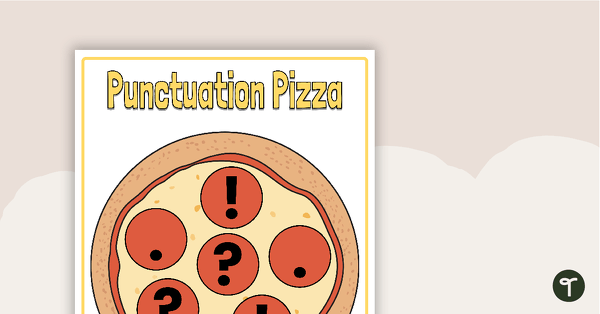
Punctuation Pizza Cover-up Game
Assist your students to recognise and use correct end punctuation with this interactive, hands-on game.
- Plus Plan

Writing Conventions Checklist
Get your students using this writing conventions checklist to edit their work across multiple genres.
- Plus Plan
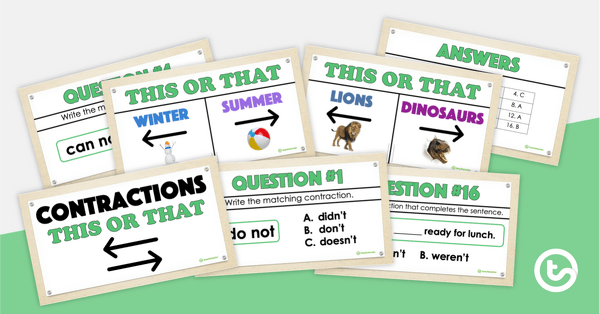
This or That! PowerPoint Game – Contractions
A quiz to consolidate your students' understanding of contractions.
- Plus Plan
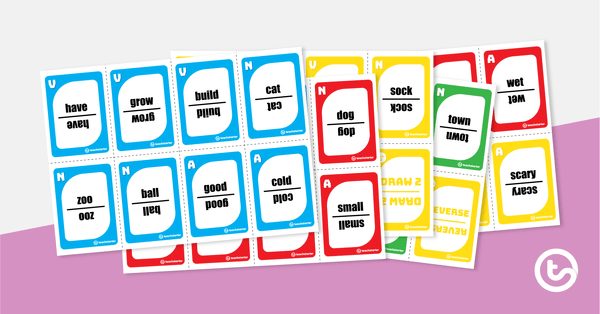
Parts of Speech Card Game – Editable
An editable parts of speech card game.
- Plus Plan
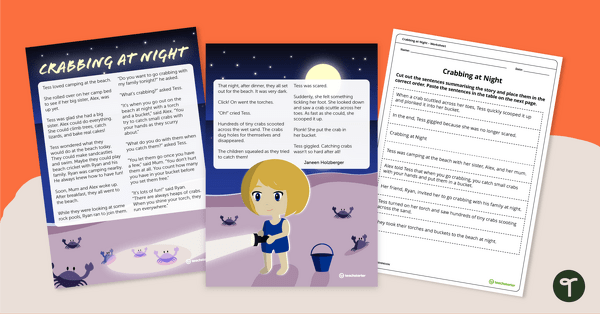
Crabbing at Night - Sequencing Worksheet
Identify the story beginning, series of events and ending with this narrative text sequencing activity.
- Plus Plan
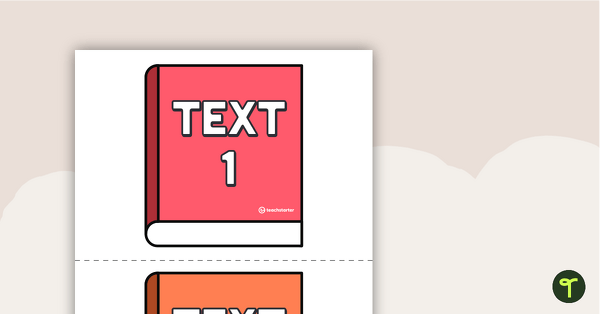
Persuasive Writing Bump It Up Wall – Year 1
A visual display for your classroom to help students ‘bump up’ their persuasive writing.
- Plus Plan

Biography Flip Book Template
A flip book template to use when writing biographies.
- Plus Plan
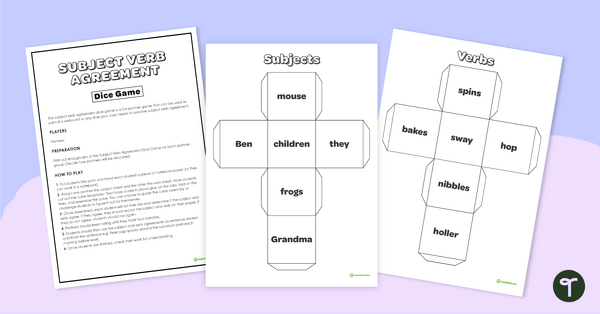
Subject Verb Agreement Dice Game
A dice game for pairs of students to practise subject verb agreement and sentence writing.
- Free Plan
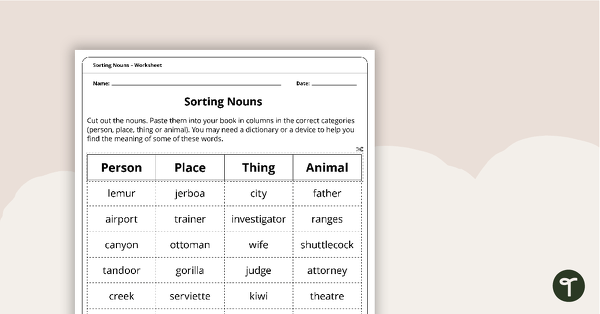
Sorting Nouns - Worksheet
A cut and arrange activity which involves students using their grammar skill to sort through nouns and categorise them.
- Plus Plan
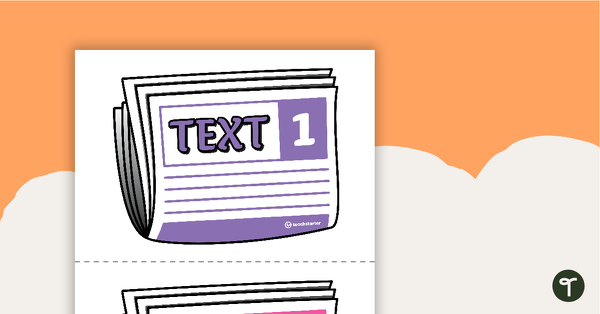
Informative Writing Bump It Up Wall – Year 4
A visual display for your classroom to help students ‘bump up’ their informative writing.
- Plus Plan
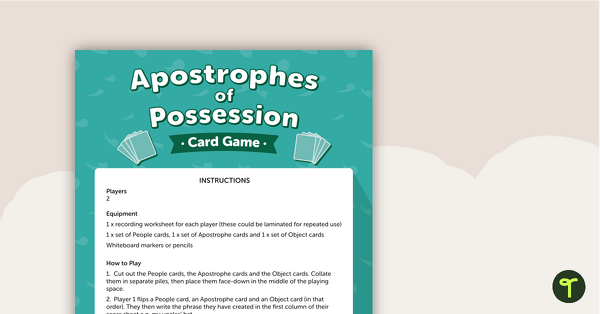
Apostrophes of Possession Card Game
An interactive card game for students to play when consolidating their understanding of apostrophes of possession.
- Plus Plan
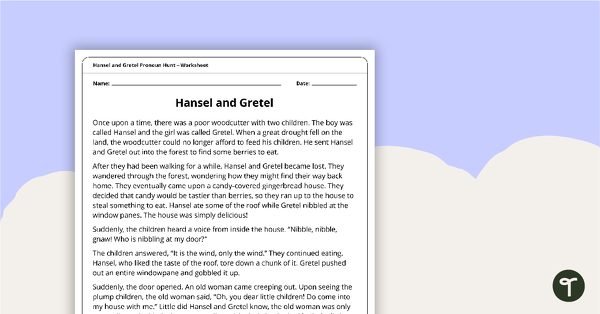
Pronoun Worksheet – Hansel and Gretel
Use this pronoun worksheet to get students identifying pronouns in the context of a well-known fairy tale.
- Plus Plan
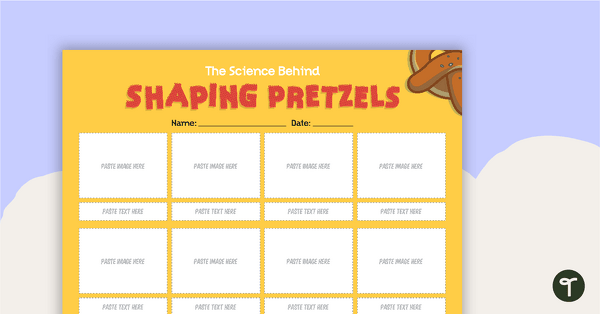
The Science Behind Shaping Pretzels – Worksheet
A worksheet to order an illustrated procedure about how to make a pretzel using scientific actions.
- Plus Plan
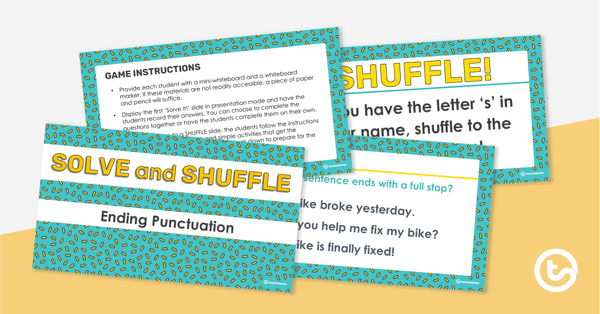
Solve and Shuffle - Ending Punctuation PowerPoint Game
An active PowerPoint game to practise ending punctuation.
- Plus Plan
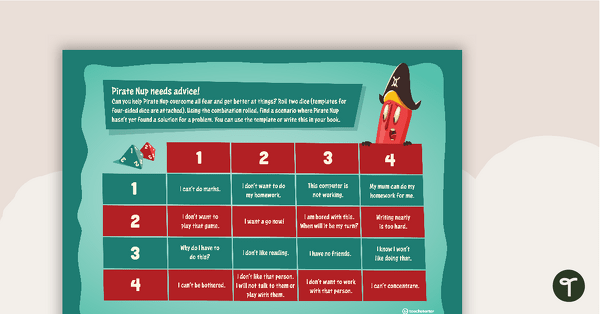
Growth Mindset Advice Dice Game
A dice game in which students are given a challenging scenario and give advice using Captain Yet's optimistic solutions.
- Plus Plan
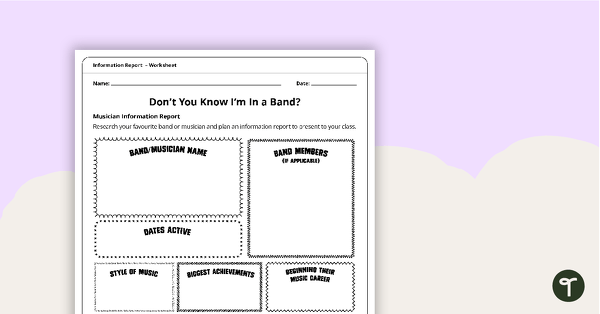
Musical Act Information Report Planner
An information report planning template focusing on a musical act.
- Plus Plan
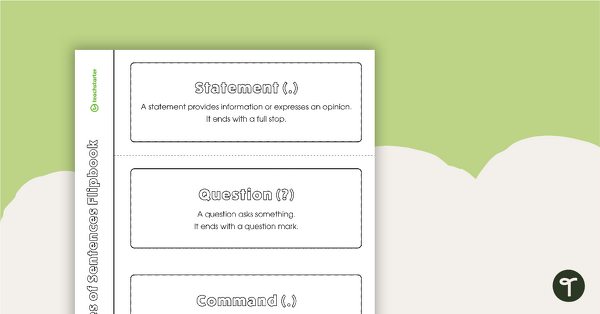
Statement, Question, Command, Exclamation Flipbook
A template for students to use when learning about the four types of sentences.
- Free Plan
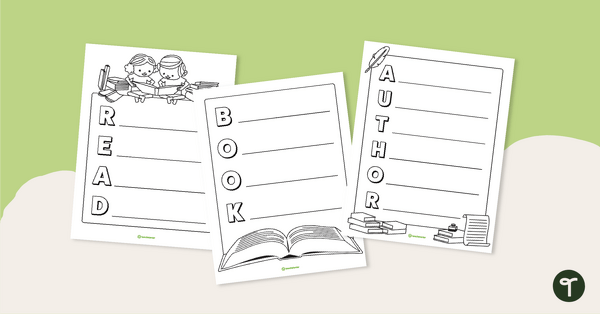
Reading Acrostic Poems – Templates
A set of 7 acrostic poem templates.
- Free Plan

I Read Because... – Writing Template
Write about the benefits of reading with this book cover writing template.
- Plus Plan
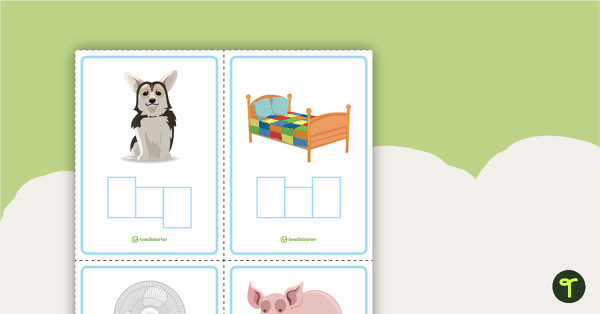
CVC Word Shape Task Cards
A set of 24 CVC word shape task cards.
- Plus Plan
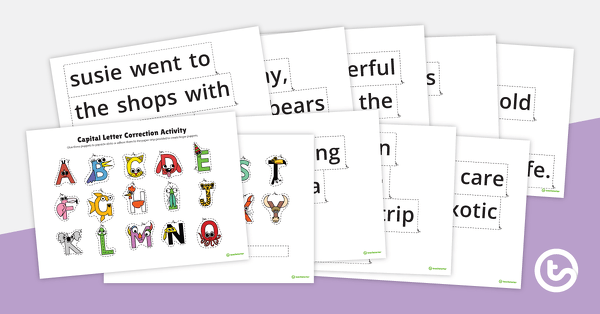
Capital Letter Correction Match-Up Activity
A cute activity where students edit sentences with capital letter puppets.
- Plus Plan
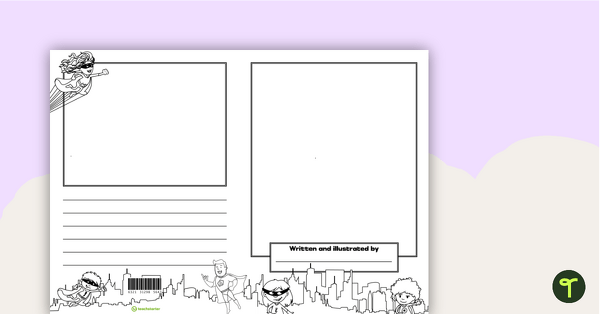
Narrative Booklet Template – Superhero Theme
A superhero-themed booklet for students to use when publishing their narrative texts.
- Plus Plan
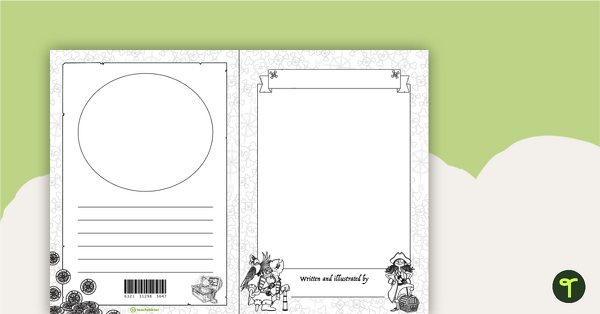
Narrative Booklet Template – Pirate Theme
A pirate-themed booklet for students to use when publishing their narrative texts.
- Plus Plan
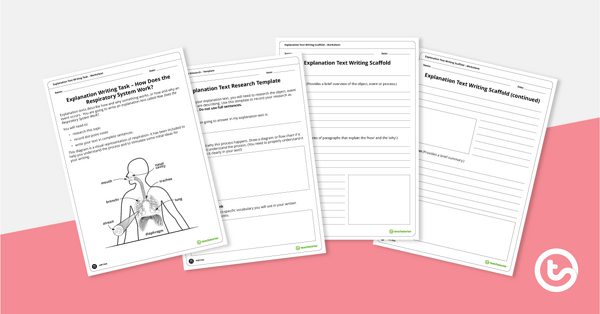
Explanation Text Writing Task – How Does the Respiratory System Work?
A scaffolded writing task for students to complete when learning about the explanation text type.
- Plus Plan
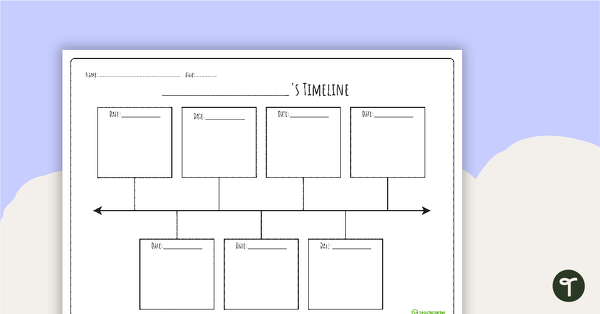
Biography Timeline Template
Use this multipurpose timeline template for a variety of assignments, projects, and more!
- Plus Plan

Noun and Verb Sort – Worksheet
A simple noun and verb sorting worksheet.
- Plus Plan
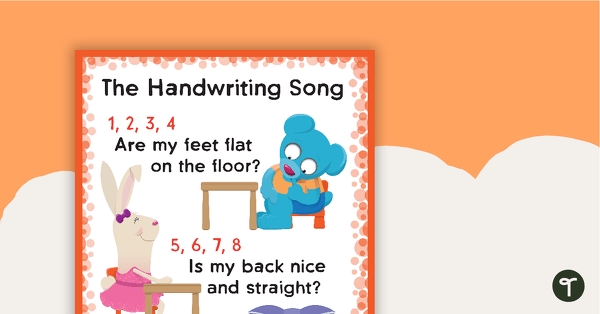
Handwriting Song Poster
A poster with The Handwriting Song to display in the classroom.
- Writing Worksheets
- Writing Templates
- Writing Games
- Writing Posters
- Writing Teaching Presentations
- Writing Labels, Signs & Decorations
- Writing Word Walls
- Writing Projects
- Writing for Preschool/Kindergarten
- Writing for Foundation Year
- Writing for Year 1
- Writing for Year 2
- Writing for Year 3
- Writing for Year 4
- Writing for Year 5
- Writing for Year 6
- Writing for Year 7